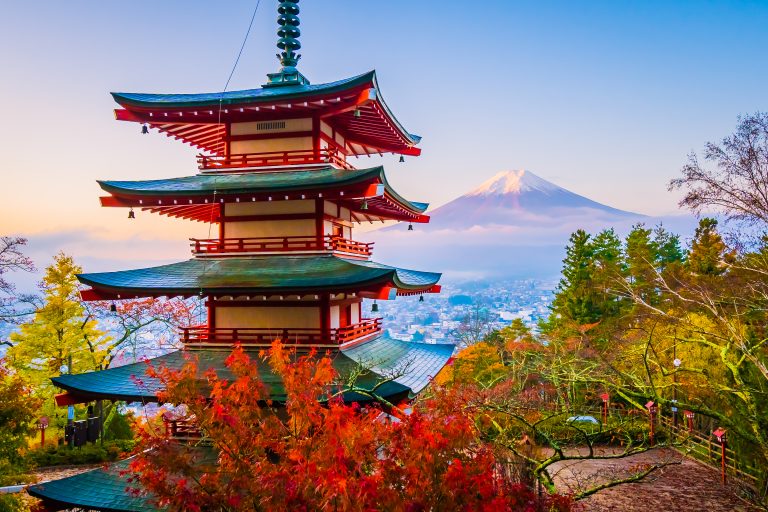TL;DR: Before you step into the captivating world of Japan, remember these three essentials: ensure your visa requirements are met, have cash ready, and pack a versatile travel adapter. Follow these tips to make your arrival a smooth and enjoyable experience.
Imagine this: You’ve just landed in Japan, excitement buzzing in the air, and the first thing you realize is that your phone is about to die. Sound familiar? Well, you’re not alone! The first hour in a new country can be overwhelming, especially in a vibrant place like Japan. But fret not! I’m here to help you navigate that crucial first hour so you can jump into your adventure with confidence.

Essential Pre-Departure Checklist
Are you ready to embark on your adventure to Japan? Before you dive into the excitement of exploring this beautiful country, there are a few essential tasks to check off your list. Let’s make sure you’re fully prepared. Here’s your pre-departure checklist.
1. Check Your Visa Requirements
The first step is crucial: check your visa requirements. Most travelers from various countries can enjoy visa exemptions for short stays, often up to ninety days. But don’t just take my word for it. It’s best to verify this information on Japan’s official Ministry of Foreign Affairs website.
Visa policies can change, and you don’t want any surprises when you arrive.
Imagine planning your dream trip only to find out you can’t enter the country. It’s a nightmare scenario! So, take a few minutes to confirm your eligibility. It’s worth it.
2. Pack a Travel Adapter
Next on your list: pack a travel adapter suitable for Japan’s power outlets. Japan primarily uses type A and type B plugs. If you’re coming from the USA or Canada, you’ll find these familiar.
However, if your laptop or device has a three-pronged plug, you’ll need a travel adapter. Many hotels and Airbnbs provide only type A outlets, which lack the third grounding pin of type B. Don’t get caught without the right adapter!
Have you ever tried to charge your phone only to realize your plug doesn’t fit? It’s frustrating! To avoid this, double-check your devices and pack accordingly.
3. Prepare Emergency Cash
Finally, prepare at least 10,000 yen for emergency cash. Japan is still quite a cash-heavy place. While credit cards are accepted in many locations, it’s wise to have cash on hand for smaller vendors or rural areas where card payments might not be an option. Storing this cash separately from your wallet is a good idea. This way, if you lose your wallet, you still have some funds available.
Japan is still quite a cash-heavy place.
Think of it like having a safety net. You never know when you might need extra cash, especially in a foreign country where you might not be familiar with the local payment methods.
Notes to Keep in Mind
As you gather your travel essentials, remember these three critical items: visa, adapter, and cash. Each plays a vital role in ensuring your trip starts off on the right foot. With these checked off your list, you’re one step closer to an unforgettable experience in Japan.
Visa policies may change; always check the latest requirements. As you prepare for your trip, keep these notes in mind. Staying informed about visa requirements ensures a smooth entry. And understanding Japan’s cash culture can save you from awkward situations when you can’t pay for something.
If you are going to Japan for an extended amount of time, you might consider setting up a cashless payment account such as PayPay, Rakuten Pay, or LINE Pay. Japan being famous for still using cash is not wrong, but it’s also true that the country has turned the corner and is much more accessible in terms of cashless options!
Arriving at the Airport
Your arrival experience sets the tone for your trip. When you land in Japan, the first thing you need to tackle is the airport. Japan has two major international airports serving Tokyo: Narita and Haneda. But which one should you choose? Let’s break it down.
1. Choose Your Airport Wisely: Narita vs. Haneda
First off, consider the location. Haneda International Airport is significantly closer to central Tokyo than Narita. This means less time spent traveling to your accommodation and more time enjoying the sights and sounds of the city. If both flights are similarly priced, Haneda is often the preferred option. Why waste precious hours in transit when you could be exploring?
However, Narita has its advantages too. It’s a larger airport with more international flights. If you’re coming from a location that primarily services Narita, it might be your only option. Just keep in mind the extra travel time to the city.
2. Fill Out Immigration Cards on the Plane
As your plane reaches cruising altitude, you’ll receive two important forms: a white foreigner disembarkation card and a yellow customs declaration card. Filling these out on the plane can save you a lot of time.
I’ve taken to filling out the forms on the plane instead of online due to the hassle of creating an account.
Additionally, having your accommodation name and phone number ready can further streamline the process. Trust me, it’s worth the effort!
3. Experience the Unique Customs Process in Japan
Once you land, prepare for a unique customs experience. Follow the yellow arrival signs to navigate to the immigration hall. Expect a thermal camera check, followed by a line for immigration. If you land around peak times, like 10:30 AM on a Sunday, be prepared for a longer wait. But don’t worry; the lines usually move quickly.
After immigration, you’ll head to baggage claim and then customs. Here, you’ll submit your completed customs declaration form. It’s a straightforward process, but it’s essential to be prepared. Once you’ve cleared customs, it’s time to focus on three key areas: money, communications, and city transportation.
Communication Needs
If you didn’t bring a local SIM card or rent a pocket Wi-Fi unit, don’t fret. There are options available at the airport. Stores like Any Phone Japan and Mobile Center are located just past the ATM area. Both offer similar services, so choose based on which has the shorter queue. If you need help, there’s an information kiosk with English-speaking staff.
Transportation into Tokyo
Getting into Tokyo from the airport is easy, especially from Haneda. The Keikyu train line is conveniently located near the arrivals hall. Make sure you have cash, as ticket machines only accept it. You’ll want to purchase a ticket to Shinagawa station, a major hub that connects to various important train lines.
At the moment, the sale of regular Suica and Pasmo cards is temporarily halted for visitors. Instead, you’ll need to rely on the Pasmo passport. It costs two thousand yen (about fifteen dollars) and includes a non-refundable five hundred yen fee. If you can’t obtain the Pasmo passport, buying individual tickets at the machines is straightforward. Just remember to keep your ticket until you exit the station!
In conclusion, arriving at the airport in Japan can be a breeze if you’re prepared. By choosing the right airport, filling out forms in advance, and knowing what to expect at customs, you can set yourself up for a smooth start to your adventure. So, as you pack your bags, keep these insights in mind for a seamless experience in the Land of the Rising Sun.

Handling Your Finances
Money can be a source of stress in a foreign country. When you arrive in Japan, it’s essential to handle your finances wisely. Here’s what you need to know about managing your money upon landing, including the best ATM options.
1. Find ATMs and Exchange Facilities at the Airport
As soon as you step off the plane, your first task should be to locate an ATM or an exchange facility. Airports in Japan are equipped with numerous ATMs that cater to international cards. This means you can access your money without hassle.
But where do you find these ATMs? Look for signs that direct you to the banking services. You’ll find ATMs in the arrival hall, usually near the baggage claim area. It’s a good idea to have some cash on hand right away. After all, you never know when you might need it!
2. Use Seven Eleven ATMs for Favorable Options
One of the best choices for withdrawing cash in Japan is the Seven Eleven ATM. Why? Because they are everywhere! You can find them in most neighborhoods, making them convenient for your needs.
- Multilingual Support: Seven Eleven ATMs provide language options, so you won’t have to struggle with Japanese. Just select your preferred language on the screen.
- Transparency in Fees: These ATMs are known for their clear fee displays. You’ll know exactly what you’re paying before you complete the transaction.
- Wide Network: They connect to various interbank networks, allowing you to withdraw money from different banks without issues.
As one traveler noted,
Seven Eleven ATMs capture the highest number of foreign visitors and do a great job with transparency in fees.
3. Understand the Cash-Centric Nature of Japan
While credit cards are accepted in many places, you’ll find that cash is king, especially in smaller shops, restaurants, and rural areas. It’s wise to have cash on hand for your daily expenses.
So, how much cash should you carry? A good rule of thumb is to have around ten thousand yen set aside as emergency cash. This amount can cover unexpected expenses, like a taxi ride or a small meal. Store this cash separately from your wallet to keep it safe.
When you’re out and about, you’ll likely accumulate coins. A smart move is to visit a Seven Eleven, where you can easily use your change for purchases. No need to calculate the amounts beforehand—just hand over the coins!
4. Tips for Using ATMs in Japan
Using ATMs in Japan is generally straightforward, but here are some tips to make the process even smoother:
- Check Your Card Compatibility: Before you leave, ensure your card works internationally. Most major cards do, but it’s always good to double-check.
- Know Your PIN: Make sure you remember your PIN. If you forget it, you’ll find yourself in a tricky situation.
- Be Aware of Withdrawal Limits: Many ATMs have daily withdrawal limits. Plan accordingly, especially if you need larger sums of money.
By following these tips, you can navigate the financial landscape of Japan with ease. Remember, having cash on hand will make your experience much smoother.
In summary, handling your finances in Japan doesn’t have to be a headache. By finding the right ATMs, using Seven Eleven for their favorable options, and understanding the cash-centric nature of the country, you’ll set yourself up for a successful trip. So, get ready to explore the beautiful Land of the Rising Sun without worrying about your finances!
Setting Up Communication
When you land in Japan, staying connected is essential. You want to share your experiences, navigate the city, and keep in touch with loved ones back home. So, how do you set up communication in a foreign land? Let’s explore your options.
Local SIM Cards vs. Pocket Wi-Fi Rentals
First, you have two main choices: local SIM cards or pocket Wi-Fi rentals. Both have their perks. If you’re a solo traveler, a local SIM card might be just what you need. It allows you to use your phone as you normally would, whether for calls or data. However, if you’re traveling with family or friends, renting a pocket Wi-Fi device could be the better option. It provides internet access for multiple devices, keeping everyone connected.
- Local SIM Cards: Great for individual use.
- Pocket Wi-Fi: Ideal for groups or multiple devices.
But what if you don’t know where to go? Don’t worry. Just head towards the kiosks at the airport. You’ll find various options available, including both SIM cards and pocket Wi-Fi rentals. Many kiosks even have English-speaking staff, ready to assist you with your choices.
Finding the Best Deal
Now, let’s talk about prices. You’ll want to compare prices to ensure you’re getting the best deal. It’s easy to get overwhelmed with all the options. Take your time to look around. Some kiosks may charge more than others for similar services. Remember, you’re not just looking for the cheapest option; consider the data limits and coverage as well.
For communication, heading back to the welcome sign is crucial to finding your options.
This quote serves as a reminder. The welcome sign is often your first stop for information. It can guide you to the right kiosks, ensuring you don’t miss out on essential services.
Convenience and Assistance
Renting a pocket Wi-Fi can be more convenient than you might think. It allows you to connect multiple devices, such as your phone, tablet, and laptop, without hassle. Imagine being on the go, needing directions, and having everyone in your group connected. It’s a game-changer!
Moreover, communication points at the airport are staffed with English-speaking personnel. This means you can ask questions and get assistance without language barriers. Whether you need help activating your SIM card or troubleshooting your pocket Wi-Fi, you’re covered.
What to Keep in Mind
As you navigate your options, here are a few key points to keep in mind:
- Check Compatibility: Ensure your phone is unlocked for local SIM cards.
- Data Needs: Consider how much data you’ll need based on your plans.
- Return Policies: If you rent a pocket Wi-Fi, check how and when to return it.
By thinking ahead, you can avoid unnecessary stress. Imagine the frustration of arriving in a new country without a way to connect. Planning this part of your trip can save you from that headache.
In conclusion, setting up communication in Japan is straightforward if you know your options. Whether you choose a local SIM card or a pocket Wi-Fi rental, just remember to compare prices and seek assistance when needed. Your adventure awaits, and staying connected will make it all the more enjoyable!
Transporting Into the City
Once you’re ready to head into the heart of Tokyo, knowing your transportation options is crucial. Here’s how to efficiently transition from the airport to the cityscape.
Catch the Keikyu Train for Efficient Downtown Travel
One of the best ways to get from the airport to downtown Tokyo is by taking the Keikyu train. This train line connects you directly to major Tokyo stations, making your journey smooth and hassle-free. The ride is not only quick but also offers a glimpse of the vibrant city as you travel.
Imagine stepping off the plane and hopping onto a train that takes you right where you need to go. Sounds convenient, right? The Keikyu line, especially, is favored by many travelers for its efficiency. It’s a popular choice for both locals and visitors.
Understand Ticket Purchasing Processes — (mostly) Cash Only!
Before you board, there’s something important to note about ticket purchases: they are nearly always cash-only. Yes, you read that right! This can catch some travelers off guard, especially if you’re used to using cards for everything. So, make sure you have some bank notes on hand. When you arrive at the ticket machines, it’s wise to have your money ready. You’ll want to avoid the hassle of searching for an ATM or a currency exchange right before your trip into the city.
Do not throw away your ticket after entering; you’ll need it to exit at your destination!
This quote serves as a crucial reminder. If you purchased a paper ticket, keep it safe with you until you reach your final stop. Losing it could mean a delay or extra fees when trying to exit the station.
Comments on Alternative Travel Cards: Suica and Pasmo
While the Keikyu train is a fantastic option, you might also want to consider travel cards like Suica and Pasmo. These cards can make your travel experience even smoother. They work on most trains and buses in Tokyo, allowing for seamless transfers and easy access to various attractions.
However, it’s important to note that at the time of writing, the sale of regular Suica and Pasmo cards is just restarting for visitors. To be safe, you can opt for the Pasmo passport, which costs around two thousand yen. This includes a non-refundable five hundred yen fee. It’s a great alternative, especially for tourists who want to explore the city without the hassle of buying individual tickets for every ride.
In conclusion, navigating your way from the airport to central Tokyo can be a breeze if you plan ahead. The Keikyu train is your best bet for efficient travel. Just remember to bring cash for tickets and keep your ticket safe until you exit. While alternative travel cards like Suica and Pasmo are convenient, the Pasmo passport is a suitable option for visitors during this time.
By following these tips, you’ll set yourself up for a successful trip into the vibrant heart of Tokyo. So, pack your bags, grab your cash, and get ready to explore one of the most exciting cities in
the world!

